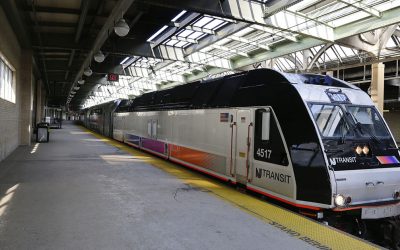Is America’s Infrastructure The Next Technology Mega Wave?
18
MAY 2021
Originally published on IoT Evolution World
Last week’s United for Infrastructure series of virtual events drew a record crowd, with contributions from the White House, US Congress, and many government agencies, as well as top industry analysts and executives from the private sector.
Given the rapid evolution of infrastructure, which blends physical and digital aspects, the Internet of Things and Industrial Internet of Things was woven throughout five solid days of keynotes, roundtables, and audience interactive Q&A sessions.
Tim McManus, Chair of the Advisory Board of Smart City Works Venture Studio, moderated a group of top leaders in the infrastructure world, focusing on the impact of innovation disruption and forecasting the impacts, challenges, and solutions regarding “the tsunami that is about to hit our industry.”
McManus, who is also the Industry Director for the Global Leaders in Construction Management program at Columbia University, opened by saying, “we’ve seen nearly $35 billion invested in new digital and tech startups focusing on the engineering, construction, infrastructure, clean energy, renewables, and smart city solutions,” while noting a McKinsey study that showed that the engineering and construction industry has had the lowest level of investment in R&D and technology than any other major industry.
“This new trend marks a serious change in how companies and investors see the future going,” McManus said. “Both companies and public agencies in our infrastructure industry have embarked on some form of innovation and/or digital transformation strategy. To leverage this emergence of new technologies, Smart City Works Venture Studio was designed to develop such tech startups into viable commercial businesses, supplementing the internal intrapreneurship and innovation that is occurring in both the private and the public sector.”
In addition to this major trend of innovation and digitalization, America’s infrastructure industry is on track to become white-hot again, like it was in 2018 and 2019, McManus explained, with rapid and wide-ranging advancements and the adoption and application of technology and digital solutions for project delivery improvement, productivity betterment, and increased and improved margins through efficiencies being seized by the first movers.
“Government agencies are adopting measures, methods, and strategies to spend money wisely, with policies that attract more private investments, while also focusing on green infrastructure and carbon zero initiatives,” McManus said. “At the same time, we also see significant challenges that can impact development in the private sector supply chain as well as the public sector, including the loss of senior experienced leadership over the last year and, with COVID-19, a significant decrease of women in the workforce across all industries. In the last report I read, about 3 million women have dropped out of industries across the United States due to the pandemic. Our industry. as we all know, has an imbalance in gender, and this further impact has set us back in significant ways.”
McManus was joined by Sadia Janjua, chief of project controls for the Port Authority of New York and New Jersey, leading the Port Authority’s innovation strategy teams to fundamentally reinvent the future of construction in the digital era; Jeannie Kwon, the Chief Administrative Officer and Senior Vice President for New Jersey Transit, who has executive oversight of strategy and planning, human resources contracting purchasing, and business development for civil rights and diversity initiatives; Murray Rowden, the Global Director of Infrastructure and Managing Director for the Americas for Turner and Townsend, responsible for developing business, focused on power utilities and defense sectors; and Denise Roth, President of WSP Advisory Services in the US, and the former Administrator of the General Services Administration.
Kwan said, “Coming out of the pandemic, we are starting to see our ridership go up. Thank goodness we have the infrastructure bill on the horizon. We are going to put people back to work on a major explosion of projects. How is the market going to handle this? How are agencies like New Jersey Transit positioning themselves to handle this? What is really going to be important is various owners coming together and talking to each other about these major projects.”
Kwan shared updates on major infrastructure projects already underway, including Gateway, the Hudson River Tunnels with an environmental impact study underway, the Portal Bridge, which is a $1.8 billion project supporting the Northeast corridor of the US, which is the busiest and most lucrative corridor in the region for commercial activity.
“During COVID, many companies were hurt, particularly those minority and women-owned, given so many constraints, so there are capacity issues today we need to address,” Kwan said. “Fortunately, discussions on how to address this are happening with the heads of New Jersey Transit, the Port Authority, the MTA, Amtrak, and others. There is going to be a war for talent, and public agencies and private businesses are focusing on flexible work arrangements, hybrid arrangements with certain days in the office, and part-time jobs, which help reduce costs while retaining top talent. Communications will be key throughout this transition.”
Roth, who has served in government and private sectors, agreed that the issue of human capacity is going to be a challenge as the US prepares for a huge wave of infrastructure funding coming through government agencies.
“The reality is that we have two waves happening in our communities,” Roth said. “We have communities, as Jeannie was referring to, that have had important infrastructure programs that they have invested in, which they have marshaled along the way, and today are focused on understanding the implications as new funding comes through. Then we have communities which are trying to redesign or understand where they fit in. From an industry standpoint, I think we need to be ready to respond at both levels. We have the opportunity with Gateway in the Northeast region to be able to move those projects quickly if we bring the right resources together.”
WSP is also supporting organizations on the West Coast, where planning has been underway on major infrastructure initiatives for years, which “creates a starting point and helps define opportunities, but we need to do that in the context of where we are today,” Roth said. “There’s quite a bit that has changed in our states and in our localities. In terms of the circumstances of our people, they’re living differently. They live in different places, and their income status has changed. Our circumstances have also brought a spotlight on where the gaps are, especially for our underserved communities. So those plans that we have underway also need to consider how we meet the needs of these populations. That’s the place where I think industry, partnering with the public sector, can drive value is bringing forward those data points, understanding and evaluating, and using that information to determine where the plans should go.”
Roth explained that from a private-sector standpoint, WSP has been bringing state and local leaders together, and working with initiatives including The Accelerator for America, evaluating the creation of command centers, and bringing together thought leaders in every region to understand where the opportunities are, where the deficits are, and to create an over-arching plan that takes into consideration many voices.
“We’re not just we’re going to go back to work,” she said, “we have to go back into a different perspective with all of this in context. We are very excited about the fact that, for those larger programs, there is the clarity of focus on new problems that we are seeing and commitment from the leadership in various regions to take steps forward. We can bring that information forward, conduct the analyses, and work together as strategic partners to figure out the next steps together.”
Janjua, who has been leading the Port Authority’s digital strategy and innovation efforts in many of the largest and most complex infrastructure projects in the world (across aviation, rail and transit, ports, and more), spoke about leveraging new technologies from virtual design and 4D BIM to construction methods and project controls.
“We been rewriting our requirements and guidelines based on the need for accurate, relevant, and consistent data to support our digitalization investments,” Janjua said. “For virtual design construction, we’ve invested in new technology to take advantage of our BIM and CAD data. We’ve created new methods of using that data to improve our project delivery performance, whether it’s scheduling, estimating, and sustainability with advanced virtual design and construction applications.”
With respect to project controls, the Port Authority created a series of data dictionaries and classification dictionaries, which are mandated for use by contractors actually to ensure that the data fits its purpose. “We’ve created a number of simple applications in project control to improve how we collect and process data and ensure the reliability of that data. Now, through standard operating procedures combined with data analytics, we are able to create workflows that make use of our digitalization progress.”
As the Global Director of Infrastructure for Turner and Townsend, Rowden has visibility into innovation best practices across all geographies and market sectors. McManus posed a question regarding what Rowden has seen in other parts of the world that represents best in class practices that can be imported into the US as the infrastructure bill becomes closer to being approved.
“There’s a big challenge for the industry across all regions, and that is clean and green,” Rowden said. “Projects are getting bigger and more complex, driving us to think around the clock about the speed of the physical construction and how the speed of the technology supplied into that construction can be aligned for more productivity.”
Rowden referenced a 2016 World Economic Forum report, which documented productivity gains across all industries and confirmed that with a slower adoption of technology, the construction and infrastructure industries are lagging.
“We’re actively involved with a number of countries, as well as provinces and states around national infrastructure plans,” Rowden said. “Having both a national infrastructure plan and state plan is like a box set. Thinking forward, asset management is not just about capital costs; today, we can bring digital asset management capabilities into planning and ongoing operations with a focus to cut costs and time. Investments around data analytics are wise and can help the construction industry get fit in terms of spending taxpayers’ money.”
“While it is difficult to find silver linings in this once-in-a-lifetime pandemic, is that at the height of COVID-19, there was so much collaboration between the public agencies and transportation agencies, like we’ve never seen at every level,” Kwon said. “We were talking to each other non-stop because we had to. Now that we are coming out of that, we are leveraging those relationships that were built. We stood up an Incident Command Center to deal with the pandemic, and now we are starting a multi-state committee and are collaborating on human resources strategy. We need great people to get these projects off the ground, so we are highly focused on job creation and recruitment.”
Roth closed out the conversation with a hopeful message, saying, “Let’s be willing to break the mold at this stage, understanding how changes in communities have impacted the needs for the future, understanding the important relationship of equity and infrastructure, and to create a new path to achieve social goals as we build. New delivery models with collaboration at many different levels is a fantastic opportunity to reinvent the way we deliver in this industry.”
Register here to watch the on-demand webinar here.
Similar Blogs
Urban Movement Labs joins as a member of Smart City Works Venture Studio
Smart City Works Venture Studio (SCWVS) announced today that Urban Movement Labs (UML) will be joining as an Agency Member of the Smart City Works Venture Studio to further efforts regarding transportation technology innovation. The Smart City Works Venture Studio helps build startups focused on key urban challenges like transportation and mobility.
Smart City Works Venture Studios Announces partnership with NJ TRANSIT as Agency Member
The nation’s largest statewide public transit agency joins as an agency member of Smart City Works Venture Studio to continue to pursue proven innovation methods and best practices for using technology in delivering safe, affordable quality transportation to its customers.
Prepare for Impact: With Billions Going into Infrastructure Modernization in the US, Will You Be Ready?
United for Infrastructure Week was kicked off yesterday with a message of hope from President Biden, who expressed the importance of this moment in American history.
“Infrastructure is about all of us,” Biden said. “We have a historic opportunity to make historic investments in our infrastructure. It will create millions of good-paying jobs. The American Jobs Plan will set us up to tackle climate change with American workers and American ingenuity,” he continued.



